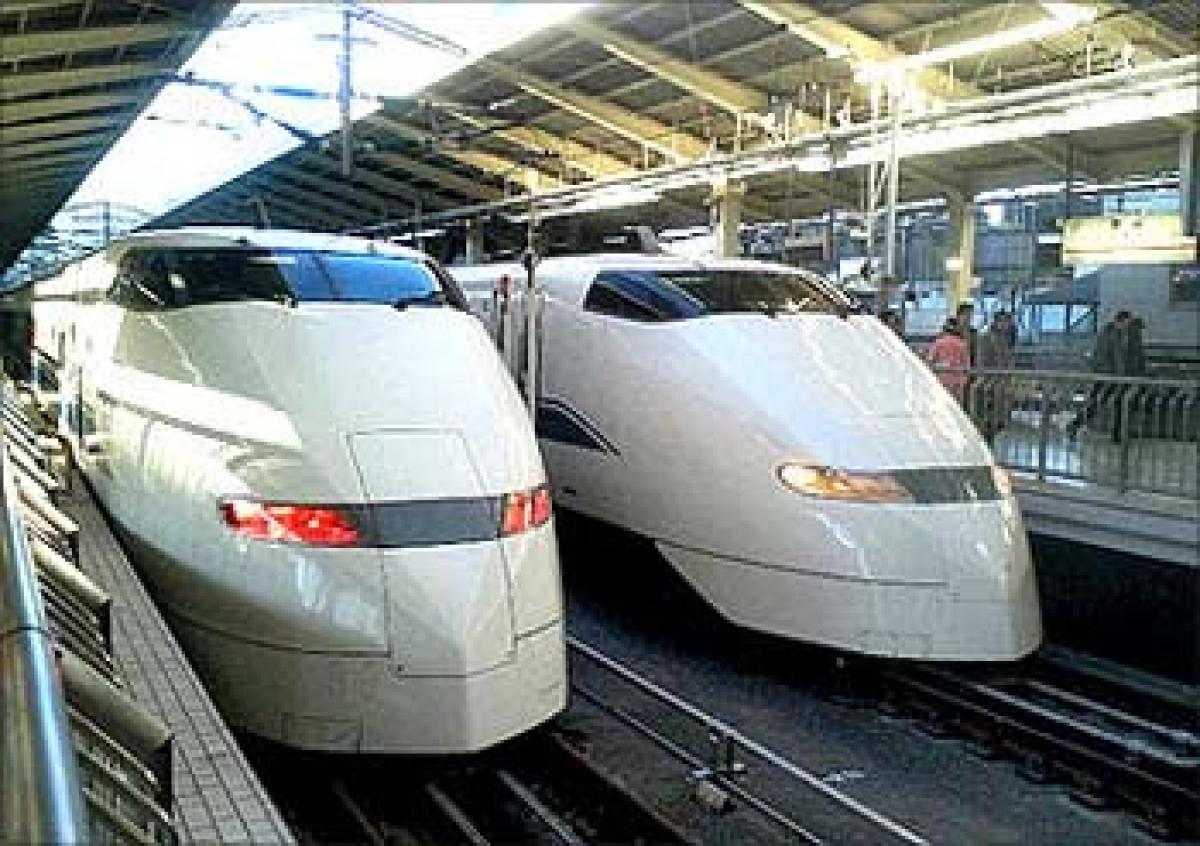Live
- ‘Bachhala Malli’ trailer heightens anticipation
- Karnataka quota row: Backward Class forum chief warns Lingayat seer over 'tinkering with reservations'
- Tight security arrangements at Group-II examination centers District SP
- Alia Bhatt captures attention in white
- Varun Dhawan talks about ‘Baby John’
- ‘Moonwalk’ trailer promises a quirky heist, love, and loyalty
- Combat leaf spot disease
- Ahsaas Channaopens up about her complex character in ‘Mismatched 3’
- Radhika Apte welcomes first child, shares heartfelt post
- Jacqueline dazzles at Da-Bangg Reloaded concert
Just In

This refers to the editorial and the news analysis on the bullet train for India (December 12).
 This refers to the editorial and the news analysis on the bullet train for India (December 12). This train requires dedicated rail track, straight without curves, on a sturdy elevated track. Further there should no level crossings, only over bridges or under bridges are envisaged.
This refers to the editorial and the news analysis on the bullet train for India (December 12). This train requires dedicated rail track, straight without curves, on a sturdy elevated track. Further there should no level crossings, only over bridges or under bridges are envisaged.
The elevated track should be such that there should be no possibility to cross the track either by people, cattle or wild animals and elephants. The human habitations and industrial belts should be avoided beside the track, although claims are in place that it is vibration and sound proof.
The first venture Mumbai-Ahmadabad takes three hours of journey time, whereas the travel time is just one hour by air. The airfare from Osoka to Tokyo is much cheaper than Shinkansen fare. Next, most foreign travellers who want to visit Ahmadabad have the airfare clubbed with international ticket. As such air journey to Ahmadabad is cheaper.
Let us not compare India with a developed and populated country like China or a small country like Japan. In India, eighty per cent of the people depend on agriculture, live in villages, struggling to cope with uncertain monsoon, floods and cyclones. Hardly 0.1 % of the rich urban population travel by air, that too at the expense of government or their companies.
Here the problem is this: bullet train travel is much more expensive. How many total number of passengers travel by air from Mumbai to Ahamadabad? At best 400 or 500, that too some morning, afternoon or evening. How will this bullet train economically be feasible? It needs an answer.
India is a land of leisure, wakes up late in the morning and sleeps early in the night. Do they need or afford expensive travel to reach in three hours instead of 6 hours by ordinary train?
A mega project of this kind of “diamond quadrilateral” needs to assess public opinion, hold consultations with political parties so that there is continuity of the project implementation, which takes several decades. After all, the lifetime of the ruling parties is at best 5 years or at the maximum 10 years. Any project that does not address rural needs will be a failure. Green revolution of 1960s is continuing.
Bakra-Nangal, Narmada Sarovar irrigation projects are initiated by one ruling party but are continued by successive governments, since a majority of people need them. Will this utopian project be continued by other successive government? A big question mark indeed! (The writer is a retired Professor of Osmania University)
By Prof G Srimannarayana

© 2024 Hyderabad Media House Limited/The Hans India. All rights reserved. Powered by hocalwire.com







